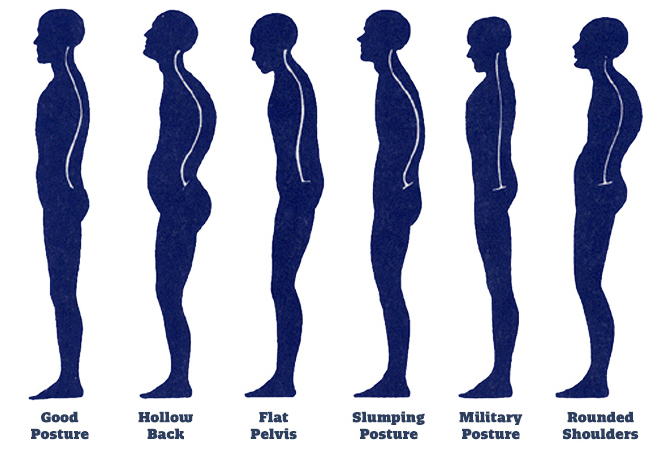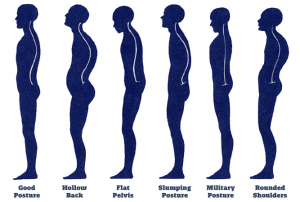
28 Feb Why Does Posture Matter?
Your mother said it. Your teachers said it. Now your Physical Therapist is saying it…sit up straight, tuck in your chin, and stick out your chest! These words often resonate with us in a negative context; yet improving your posture may be the best and easiest thing you can do to avoid and treat chronic shoulder and neck pain. And, it makes you look so grown up, like mom used to say!
Why does posture matter? Our bodies are made in such a way that the resting weight of your head is best placed on the bony architecture of your neck and upper back to avoid abnormal strain on muscles and ligaments. When we, as we so often do, let our chin and head slide forward, now we are partially or wholly placing stress on the soft tissues, while at the same time closing the canals that nerves pass through from our neck into our arms. The resulting stress over time causes pain, muscle fatigue, deformation of ligaments, and abnormal stress on nerves. And, over time, bad posture begets worse posture as gravity and staring into windshields, books, computers, and phones all compound the issue.
Improving your posture is not an all-or-none process. Better is better. Any movement out of the slumpy forward-head-and-shoulder position is an improvement. We needn’t use strict military alignment as a rule, but instead think about incremental steps to bring the head and shoulders back into better alignment. This is hard work, and folks often complain bitterly during the initial phases of improving posture that their muscles are sore in their upper back. The reason, of course, is that you have been straining those very muscles for so long that they have become weak, and it will take time to reverse this process.
Here are some simple do-it-yourself practices to perform at home to move you towards better posture:
- Reduce screen time to one hour at a time and stretch your head and shoulders back for a minute during your break. Try to hold your head and shoulders back for as long as you can as your return to your task.
- Be sure that your lower back is properly supported, with a small forward curve that helps you to rest on your sit bones. To practice, sit on a firm chair with your feet on the floor and knees slightly wider than normal. Roll your pelvis forward as if you are trying to push your belly button forward and down and make the forward arch in your low back larger. It feels weird, but you will get used to it. If people laugh, know that you are taking the high road to better posture. Be smug.
- Purposely squeeze your shoulder blades together 10 times, holding for 10 seconds, several times a day. Stick your chest out. Burst with pride.
- ·Use a swimming pool noodle as a prop to help pull your shoulder blades back. With the noodle on the floor, straddle the noodle and lie back with knees bent, and your buttocks and head resting on the noodle. Put on some soft music and let gravity assist you in pulling your shoulders back.
- Consider alternating between a sitting and standing desk at home and at work. The transition lets you re-set your posture. Work on holding your head and shoulders back for longer periods as you become stronger.
- Finally, simply sit and stand taller, as if a string on the top of your head is being pulled up by a magic, giant Physical Therapist. Try not to have bad dreams, it’s not really a magic giant Physical Therapist after all, it’s just you defying gravity.
Instituting these easy practices can dramatically improve your posture and reduce stress and strain on your neck, shoulders, upper back, and nervous system. And, like mom always said, you’ll look taller and much smarter. If it helps, get a pair of reading glasses from the drugstore to go with your new look. People will notice!
If you continue to struggle with posture and the painful effects of prolonged sitting, driving, reading, computer work, and staring at your cell phone, we can help. Contact any one of our four conveniently- located offices to schedule an appointment with one of our caring, good-natured, and perfectly- postured Physical Therapists. They will help you design a program specific to your needs and give you the tools to look and feel your best.
In good posture and bad,




